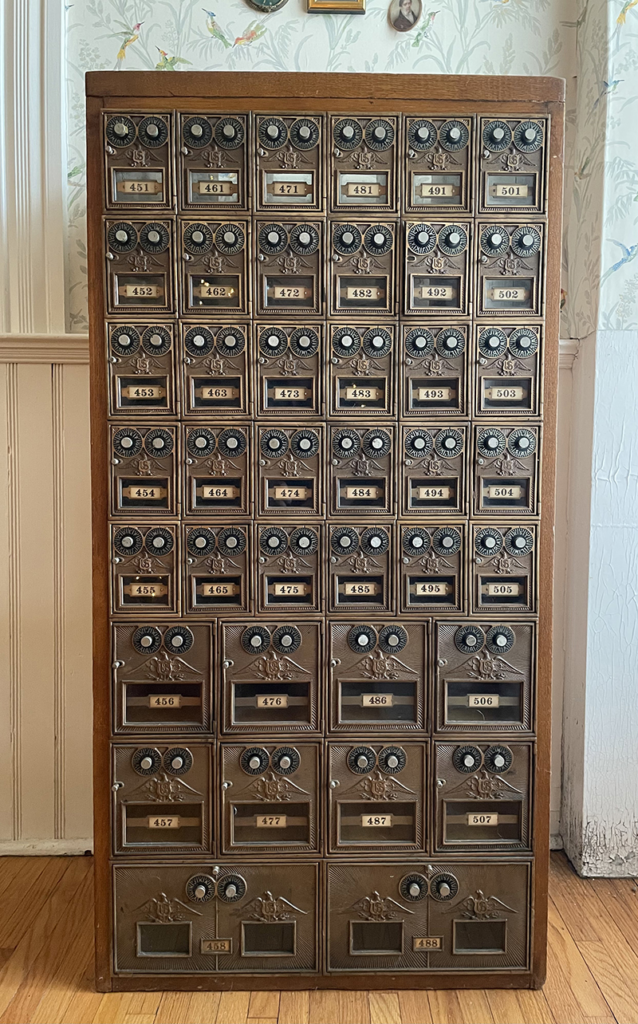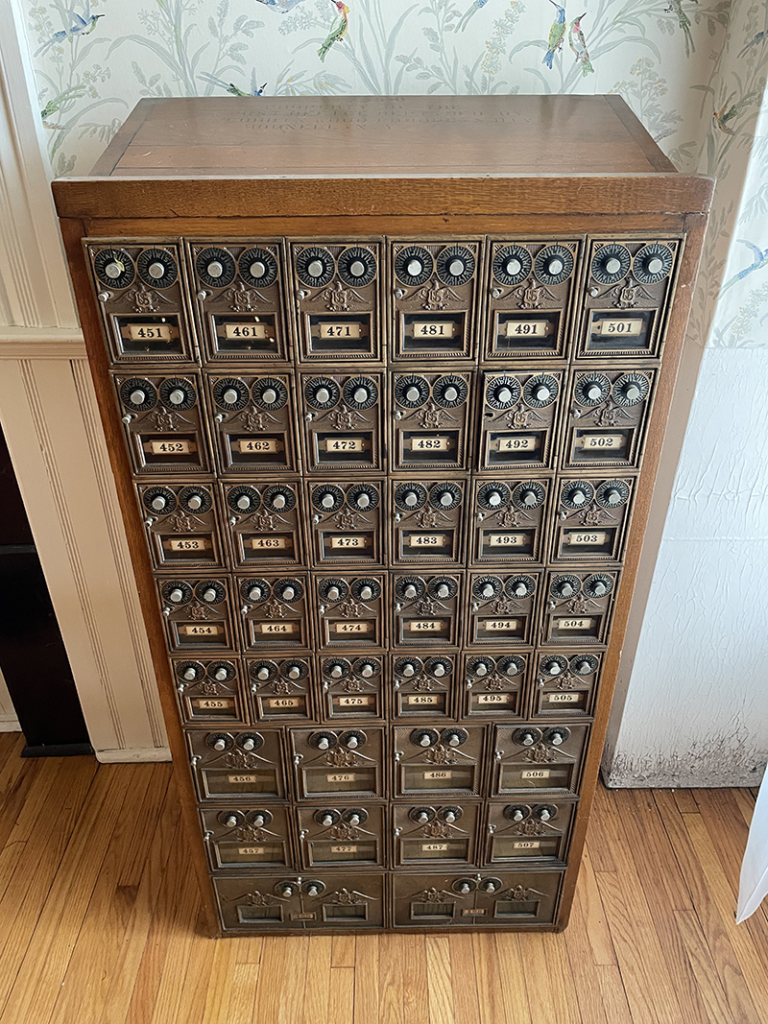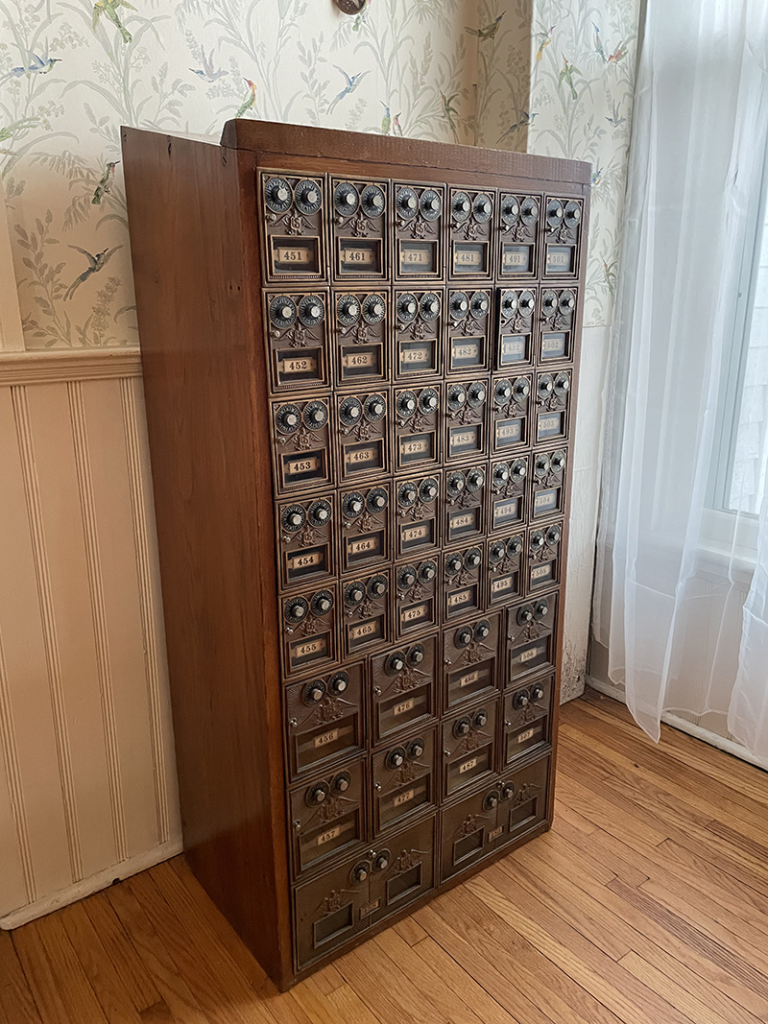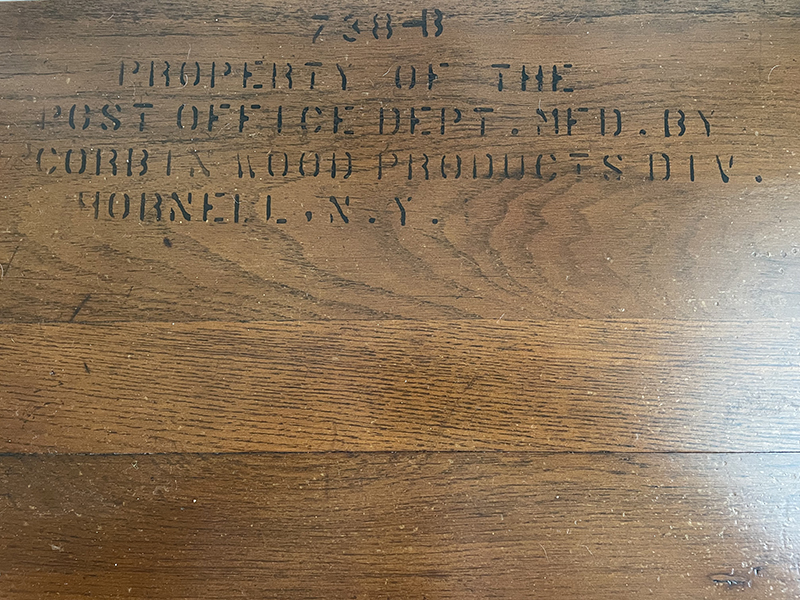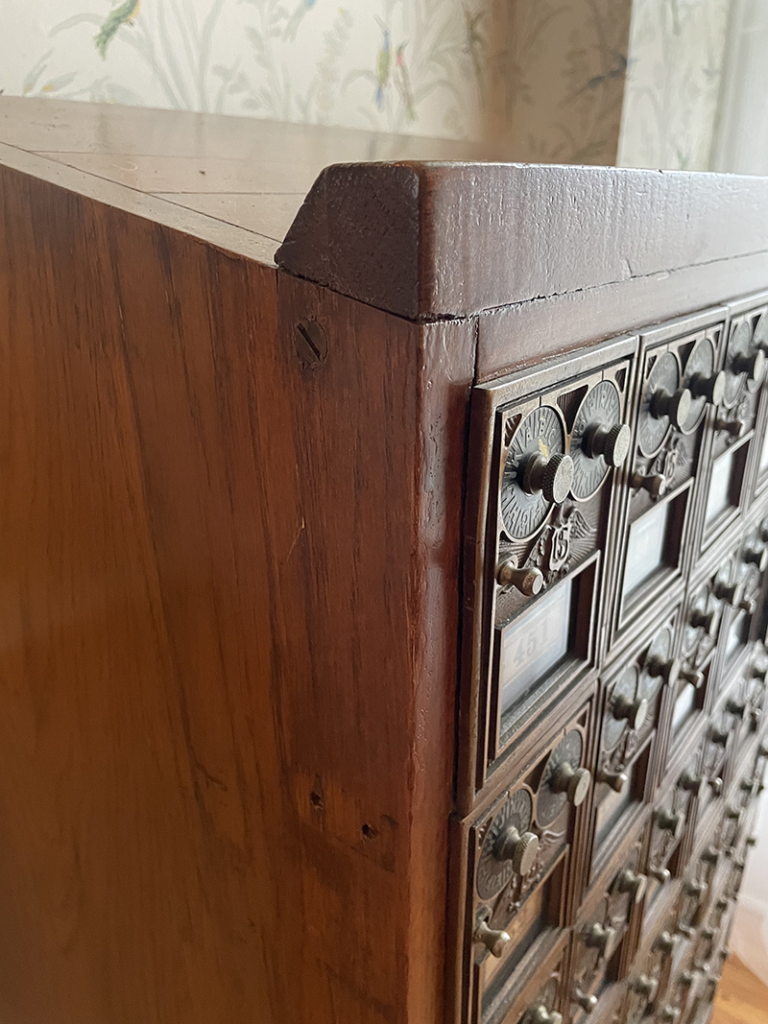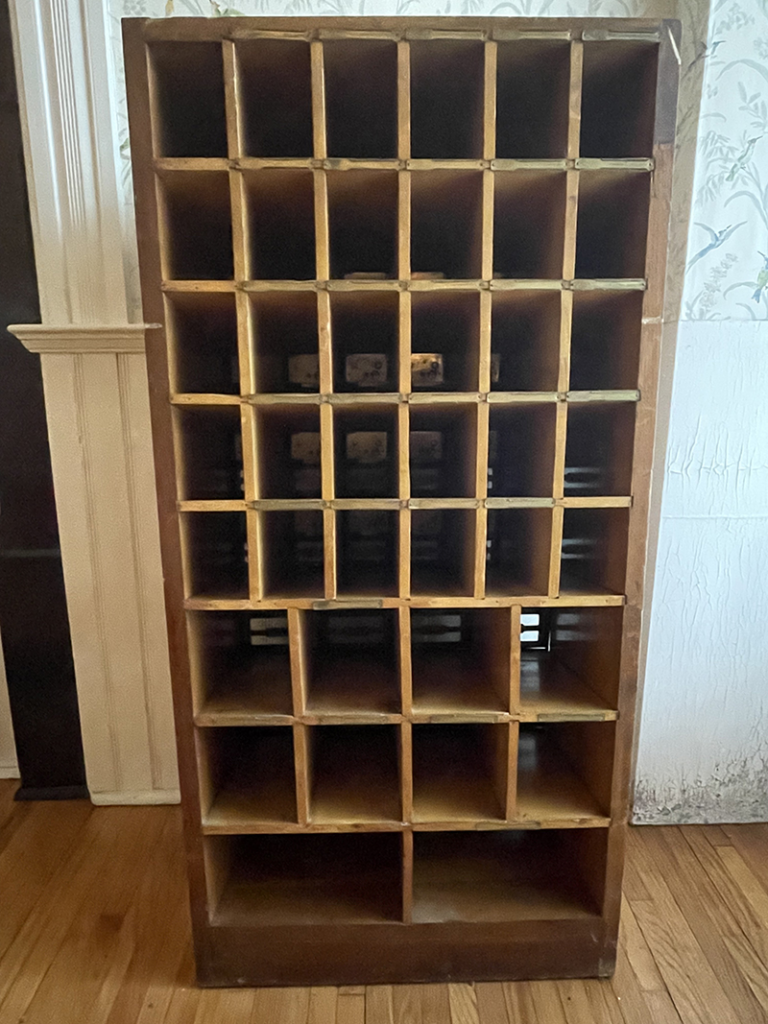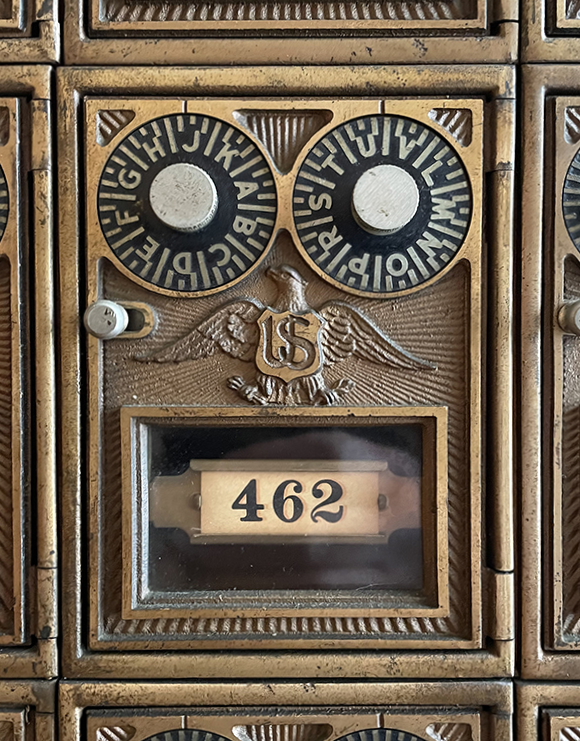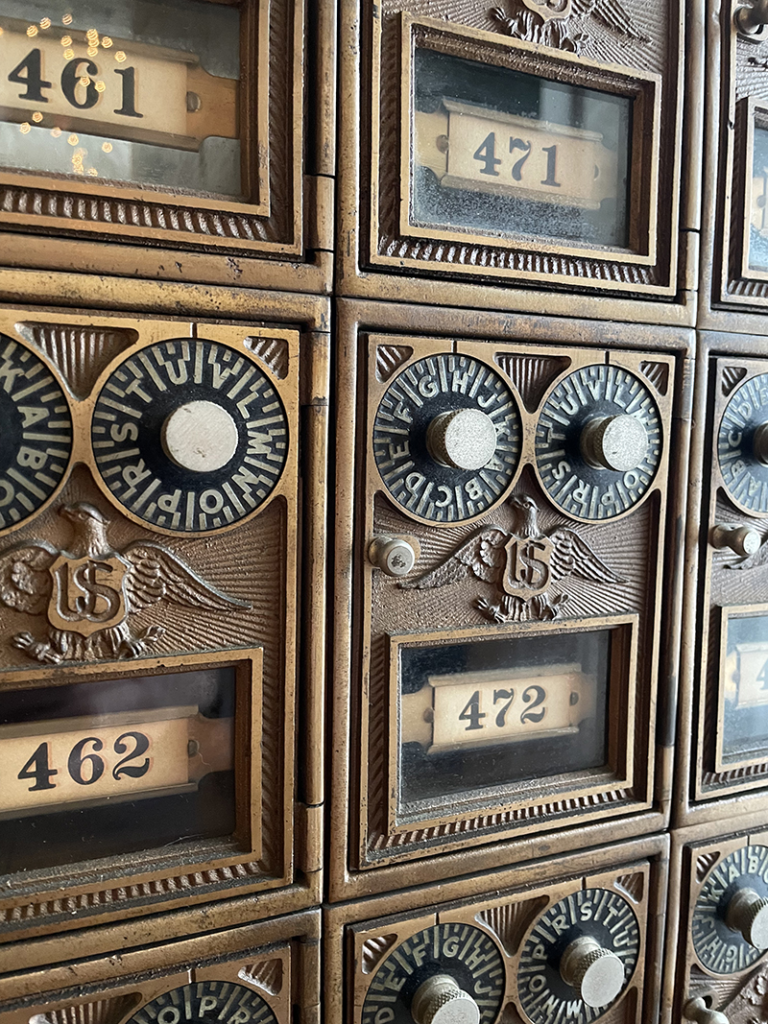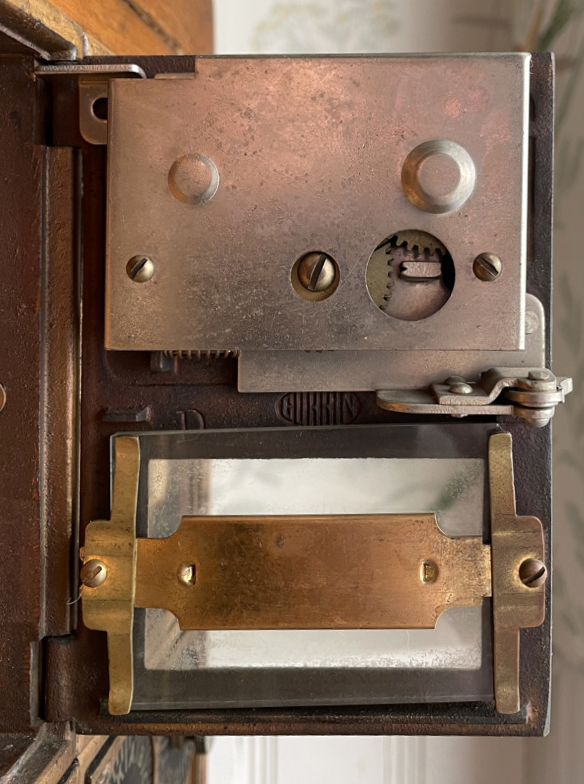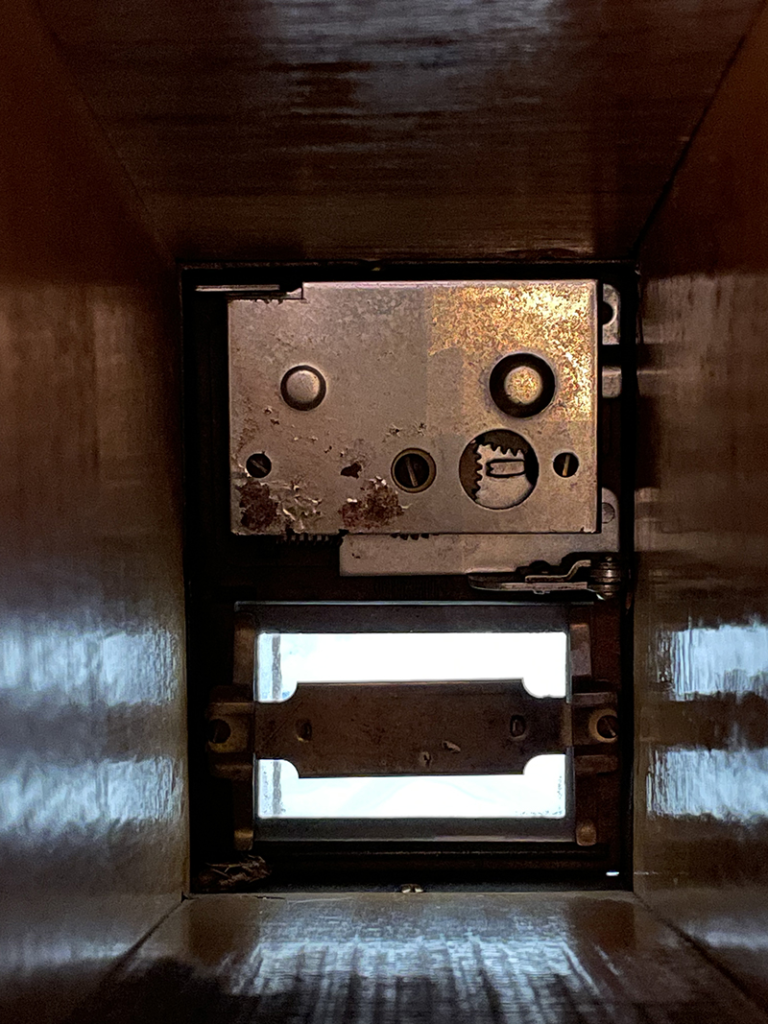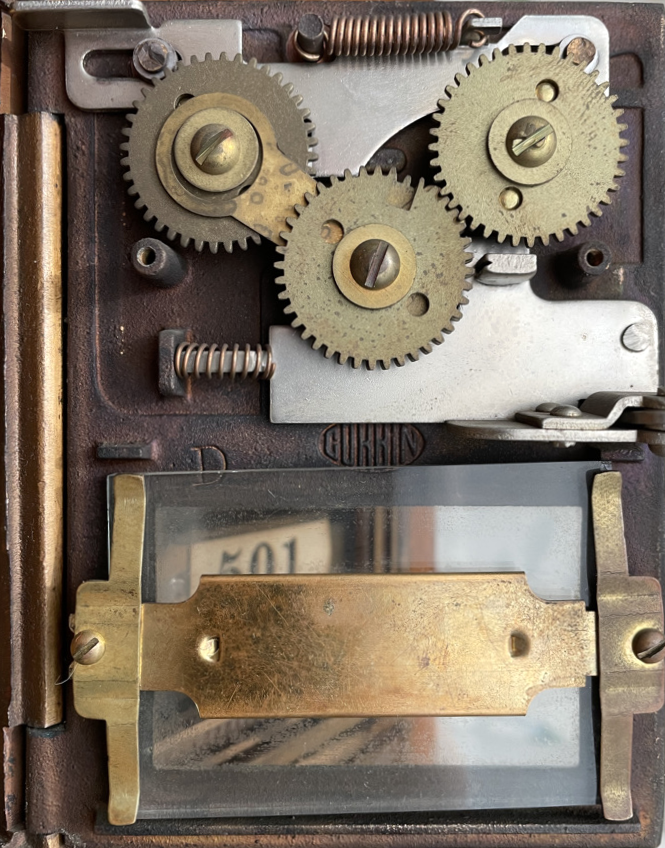
Post-office-box cabinet. This piece of furniture may at first glance seem unusual, even surprising, as it has little to do with what one thinks of typical domestic furnishings. Yet, upon closer examination, one gains a sense of familiarity after noting the bank of keyless lockboxes, each face marked with a number, suggesting a bank of mailboxes.
Built for rural and urban United States Post Offices around the country, this timeless cultural artifact called a post office box (aka P.O. Box), is one of the many nostalgic artifacts today termed Americana. Conceived as part of standardized units, the cabinets can be joined next to each other to create a wall of lockboxes. Although mail was delivered at home, for individual or business purposes, patrons could retrieve mail directly from their local post office by renting a box. Today, this post office box cabinet stands alone in the entrance foyer of a 1892 home, and serves to hold our guest book where friends can write a short note.
When I purchased this cabinet—almost 30 years ago from an antique store in western Kentucky, I had never seen a similar one, nor did I know about its broader purpose. However, I instantaneously knew that it was unique as an object and deserved a new home; a new custodian! I was fortunate in my purchase, as the seller could not figure out how to unlock each of the boxes, thus found no utility to keep it any longer. I was also lucky as it fit in my car to become a perpetual conversation piece for visitors at our home!
Description
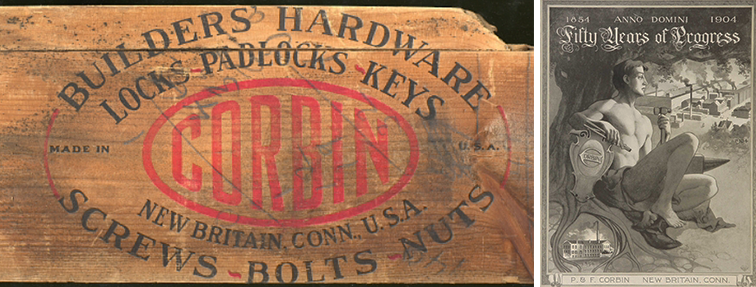
Despite its simple vertical rectangular shape—which I may say is quite regal—the cabinet showcases an elegant pattern of forty lockboxes: thirty small units, eight medium units, and two larger units. Each of the cabinet sides are made out of solid wood and allow additional units to abut, while the back features forty slanted cubbyholes where the postal clerk would slip the patrons’ mail or packages into their space.
The top of the cabinet features a gently inclined surface on which one could write a note, issue a check, address letters, affix postage or read the mail retrieved from the box. The only writing beyond the lockbox numbers, is stenciled on the top wood surface with the following inscription:
738-B
PROPERTY OF THE
POST OFFICE DEPT. MFD. BY
CORBIN WOOD PRODUCTS DIV.
HORNELL, N.Y.
The writing re-confirmed that indeed it was an artifact belonging to a post office, with the featured artifacts previously houses at the Hornell Post Office in New York state. Further research allowed me to confirm the manufacturer Corbin Cabinet and Lock Co (today known as CCL Security) fabricated these cabinet as early as 1902 in Connecticut. After the turn of the century, the company quickly became a leader in “high-quality commercial grade hardware targeted at commercial and institutional facilities.” (Image 1, above)
Lockboxes

The cabinet is rather heavy due to its solid oak construction in addition to the decorative front door boxes made of brass with nickel plated combination dials. For ease of description of the actual lock box, I have identified five elements from top to bottom, and left to right (Image 2 above).
- The upper part features the Corbin Dual Dial (often referred to as DD for the double dial) with alphabetical letters ranging from A to V. The left dial has eleven letters from A to K, while the right dial features eleven letters from L to V. Framed by two elongated lines, each letter has three additional lines above its letter, thus offering five possible combinations for each letter.
- Below both dials have a symmetrically positioned eagle with spread wings, featuring a US seal centrally affixed. The bald eagle is the ultimate representation of America. This symbol is similar to the winged lion of Saint Mark, which adorns doors and facades of buildings in the Serenissima, and which held an open book when the republic of Venice was free. In the post office cabinet, the eagle holds an olive branch in its left talons for peace and thirteen arrows in its right talon – standing for the 13 first US colonies – for war. It is customary that the eagle always “casts its gaze toward the olive branch signifying that our [American] nation desires to pursue peace but stands ready to defend itself.”
- To the left of the eagle, is a small latch button that moves horizontally to open the unit after the correct code is entered.
- Under the eagle is a horizontal framed rectangular window that features the number of each mailbox. Each number is printed on a light background and held by a thin horizontal metal band. Numbers could be custom made to include a maximum of four digits. This particular cabinet features numbers 451 though 507. Note that the numbering starts to the far left (451) and moves vertically down before repeating with second row until reaching 507.
- Finally, the door hinge is located to the right opposite the latch button.
Each individual lockbox is made out of cast brass with a beautiful fan-like background emanating from the eagle that unifies the above five components. The symmetrical composition is similar for the small and medium boxes. The two larger boxes are slightly different and feature two eagles above two windows with the numbers centrally located between the windows, with the latch above the dual dial.
The dial mechanism
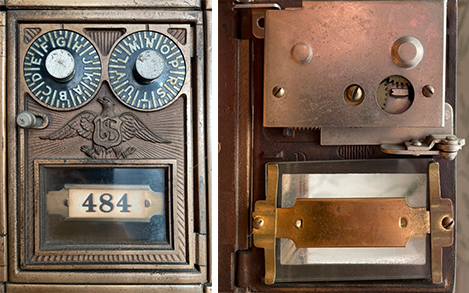
To unlock each unit’s door, each dial has a wheel (1 and 2) that moves an additional wheel (3 and 4); the latter are superimposed between the dial wheels (Image 4 below). Wheels 3 and 4 have grooves that need to be aligned so that the latch can move into the groove and open the lockbox.
The below photographs (Image 4) show that wheel 1 moves wheel 4, and wheel 2 moves wheel 3. For the purpose of comprehension, the left image shows when both grooves are not aligned, while the right image shows both grooves superimposed, thus letting the latch open the door. A simple, elegant, and ingenious way to provide security for each lockbox in such a flat space.

History

Locks have favored the usage of brass because of the ease of being cast into molds. Brass is also robust compared to bronze, which is more brittle. It is also resistant to tarnish and corrosion, and has a long history of decorative use beginning with the antique world as brass offers a beautifully dull gold color with use.

The earliest post office lockboxes in the US were cast bronze (c.1885), followed a year later by rolled brass (c. 1886) with dual dials no longer centered but positioned to the left, with a key lock (1890s, a one dial model (1896, possibly an early combination system), and one made from brass and bronze (1906) with for the first time the introduction of the eagle (Image 5 and 6 above; and 7 and 8 below).

The one I have seemed to have been produced between 1906 through the 1920s (Image 6 above, second from left is one of 1906) followed by a version with one dial, then by chrome plated cast bronze doorlock in the 1950s, without the eagle, thus more functional than symbolic; and this throughout the 1960s (Image 6 above).
Although similar to the 1906 pattern, from research, the cabinet in my possession appears to be of the 1920s or 1930s as a result of the Works Progress Administration (WPA), which was part of the New Deal plan. One feature that is different in mine from the 1906 pattern is that the lettering is a thicker font (Image 9 below).

Conclusion:
This piece belongs to a unique moment of commercial cabinetry and is scarce because when found most people break them up to sell the door boxes individually, adding special wood, thus losing the integrity of the original piece as an entity.
General Information
Height: front 46.50in, back 48 3/8in
Width: 23.50in
Depth: 14in
Period: early 20th century
Construction: Brass and oak wood
Style: Americana
Wood: Oak wood
Additional curiosities named portraits of a collection
Images
